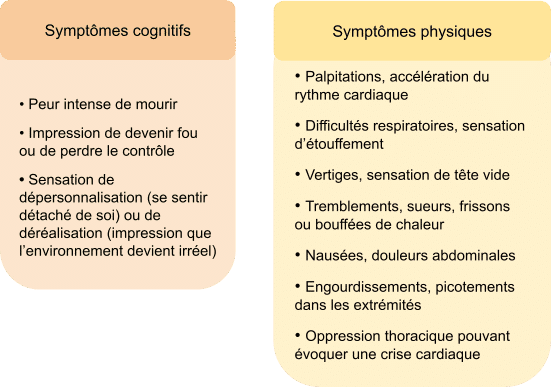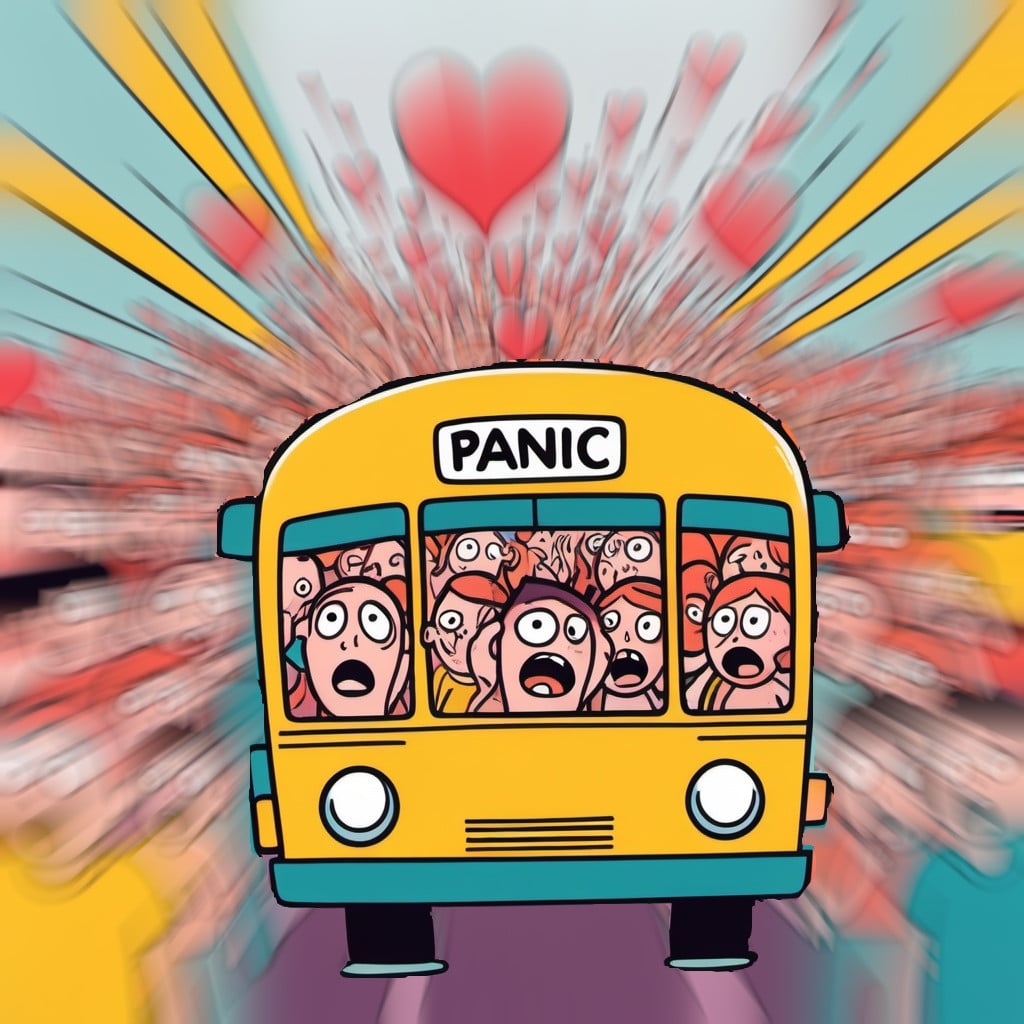When you welcome a customer into your practice, they may show signs of sudden, intense distress. Breathlessness, a distraught look, a feeling of dizziness… It could be a panic attack. This phenomenon, although transitory, can be extremely impressive for both the person experiencing it and those around him or her. But how do you recognize a panic attack, and what are its underlying mechanisms?
| Contents: Panic attack symptoms Panic attack mechanisms Differentiating panic attacks from other disorders How to react to a panic attack Preventing panic attacks Conclusion |
Panic attack symptoms
A panic attack is a sudden surge of anxiety accompanied by various cognitive and physical symptoms. It usually peaks within a few minutes, and lasts on average between 10 and 30 minutes.

Absolutely anyone can experience a panic attack in their lifetime! However, experiencing them repeatedly can be a sign of panic disorder.
Panic attack mechanisms
Panic attacks are often triggered by an over-reaction of the nervous system to a perceived threat, even in the absence of actual danger. It involves the sudden activation of the fight-or-flight response, orchestrated by the amygdala and autonomic nervous system.
This process leads to a rapid release of adrenaline, causing the heart to beat faster, breathing to increase and muscles to tense up. Hyperventilation contributes to dizziness and tingling, reinforcing the impression of loss of control.
Differentiating panic attacks from other disorders
It’s essential to distinguish panic attacks from other medical or psychiatric conditions. A heart attack can cause similar symptoms, including chest pain and tightness, but is often accompanied by other signs such as pain radiating down the left arm. Similarly, certain pathologies such as hyperthyroidism or hypoglycemia can cause sensations akin to panic attacks.
A crucial point to understand is that the term “anxiety attack” is not a formal medical term, and is used only in relation to anxiety disorders such as social anxiety. Some people use the term to designate an emotional and physical response to specific stressors. Panic attacks, on the other hand, are episodes of intense anxiety that result in severe cognitive, emotional and physical symptoms. The latter are caused by activation of the sympathetic branch of the autonomic nervous system. Although panic attacks are common in people with panic disorder, anyone can experience them in the course of a lifetime. Confusion between an anxiety attack and a panic attack is common, but it’s important to recognize that panic attacks occur suddenly and without apparent cause, often with an intensity disproportionate to the situation.
Panic disorder, on the other hand, is characterized by recurrent panic attacks and persistent anxiety at the thought of reliving one. This creates a vicious circle in which the anticipation of panic attacks becomes more complicated to manage than the attacks themselves. This disorder differs fromgeneralized anxiety disorder, where worry is constant but less paroxysmal (less severe).
How do you react to a panic attack?
If you witness a panic attack, here are a few tips to help the person regain their composure:
- Encourage controlled breathing: Ask her to breathe slowly, inhaling through her nose and exhaling through her mouth. An effective technique is to breathe into clasped hands or a paper bag to avoid hyperventilation.
- Speak in a calm, reassuring voice: Remind her that the crisis is temporary and will pass. There is no risk of death. You can name the physical symptoms the person is experiencing to explain that they are due to anxiety.
- Suggest an anchoring technique: Ask her to name five things she sees, four things she touches, three things she hears, two things she smells and one thing she tastes. This refocuses her attention on the present moment.
- Encourage progressive muscle relaxation: suggest that the person contract their fingers and toes strongly for a few seconds, then relax them completely. Repeat this exercise several times. This technique helps to divert attention from anxiety-provoking sensations and promotes activation of the parasympathetic nervous system, responsible for restoring calm.
- Avoid blunt injunctions: Saying “Calm down” can be counterproductive. It’s better to support the person without minimizing their feelings.
Preventing panic attacks
Managing stress on a daily basis can reduce the frequency of panic attacks. Here are some useful recommendations:
- Practice relaxation techniques: Meditation, cardiac coherence or yoga help reduce nervous system hyperactivity.
- Avoid stimulants: Caffeine and nicotine can exacerbate anxiety and promote seizures.
- Exercise regularly: Physical activity helps to regulate stress and improve tolerance to unpleasant bodily sensations.
- Consult a professional: Cognitive-behavioural therapy (CBT) can help identify and modify the catastrophic thoughts that fuel panic. Hypnosis has also shown encouraging results in treating the onset of panic attacks.
Conclusion
As a massage practitioner, you’re not there to diagnose panic disorder, but your presence and caring approach can help people prone to panic attacks to feel safe. Relaxation through touch can be an invaluable tool for calming the nervous system and promoting a lasting state of well-being. By remaining alert to signs of distress, and referring to a competent professional if necessary, you play an important role in their journey towards calm.
To remember:
- A panic attack is a sudden surge of anxiety with physical and cognitive symptoms, peaking within a few minutes.
- Different from an anxiety attack, frequent panic attacks can be a sign of panic disorder.
- React effectively: encourage breathing, sensory anchoring and muscular relaxation, while avoiding sudden panic.
- Panic attack prevention: a healthy, balanced lifestyle combined with stress management techniques and physical activity are likely to reduce the frequency of panic attacks if they are recurrent.
Sources :
- American Psychiatric Association (2022). Diagnostic and Statistical Manual of Mental Disorders: DSM-5-TR.
- Barnhill, J. W. (2023). Panic attack and panic disorder. Professional Edition of the MSD Manual. https://www.msdmanuals.com/fr/professional/troubles-psychiatriques/anxi%C3%A9t%C3%A9-et-troubles-li%C3%A9s-au-stress/attaque-de-panique-et-trouble-panique
- Vandergriendt, C. (2024). What’s the difference between a panic attack and an anxiety attack? Healthline. https://www.healthline.com/health/panic-attack-vs-anxiety-attack#takeaway
- Anchor strategies: Canada: eMentalHealth.ca. eMentalHealth.ca Resource Directory. https://www.esantementale.ca/Canada/Strategies-dancrer/index.php?m=article&ID=62619

